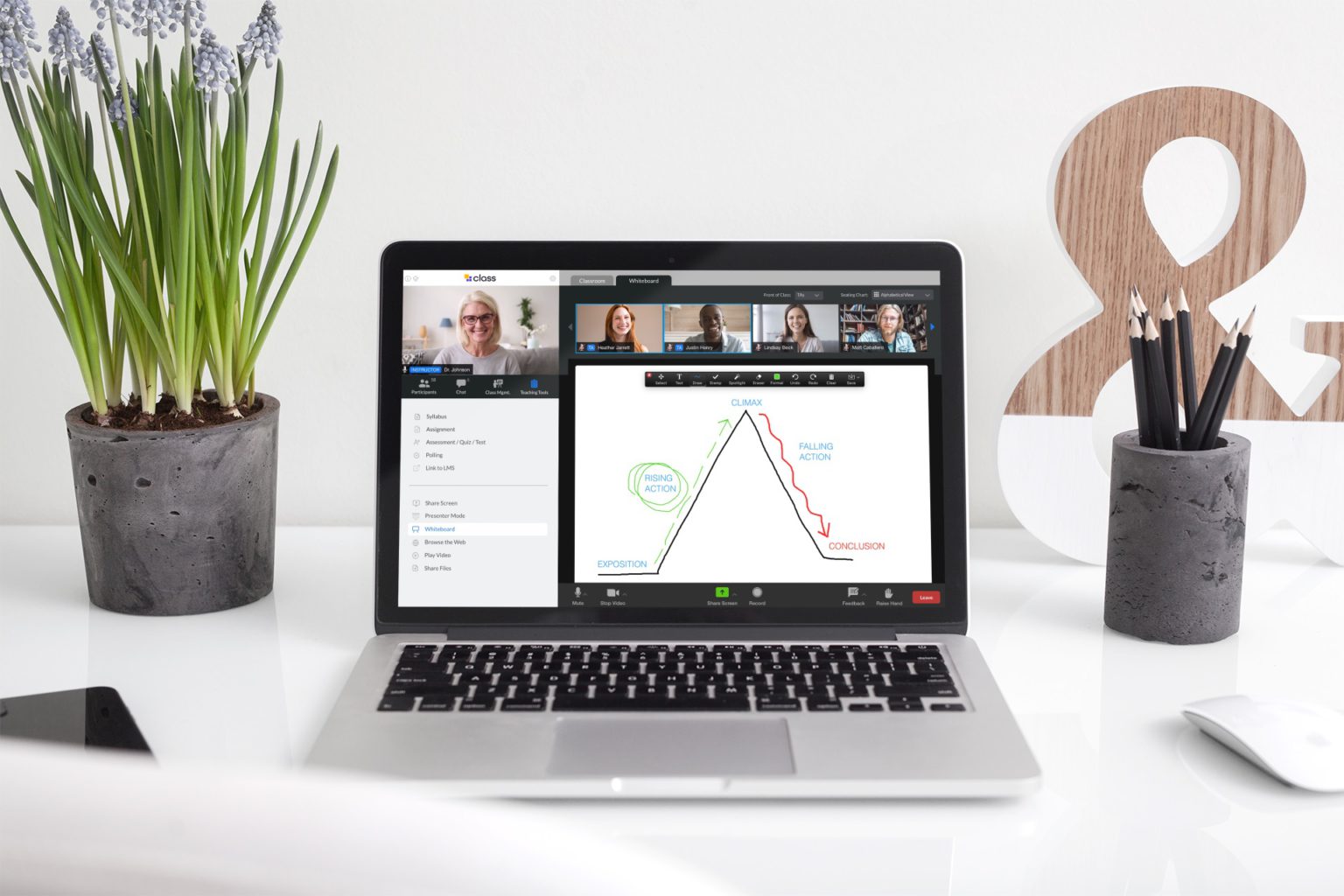

Class is the next generation virtual classroom for K-12, higher education, government agencies, and the workplace. Contact us today to schedule your live demo and see Class in action.

Class is the next generation virtual classroom for K-12, higher education, government agencies, and the workplace. Contact us today to schedule your live demo and see Class in action.

Zoom started out as primarily a business tool. However, the pandemic’s surge in distance learning has made the platform a common classroom tool. Zoom resources for professors have allowed them to continue teaching in a wide range of settings, including hybrid models.
These virtual resources have made a variety of online teaching strategies possible—both synchronous and asynchronous. While the initial shock created much consternation among teachers, administrators and IT staff, all quickly learned to adjust.
COVID, says Allen Koh, CEO of Cardinal Education, “has started the largest remote learning experiment worldwide.” Looking forward, he predicts, “technologies like Zoom will have a big impact on future education.” Both students and teachers are likely to continue to rely on online learning platforms.
Teaching students online using Zoom resources for professors is one primary way that universities have been leveraging the software since March 2020. However, hybrid teaching strategies have also been augmented via Zoom in other ways.
Darla Ausel, manager of learning technologies and instructional designer at Clarion University, points out that Zoom can be a great tool for instructors outside of a classroom setting as well. For instance, when meeting with advisees, for office hours, or for success coaches to work with students who may need coaching, tutoring or assistance.
While students may eventually return primarily to in-person classroom settings, many believe that tools like Zoom will continue to have a place on college campuses. For instance, for holding remote office hours or having one on one meetings with students, providing a Zoom link to a recording of a lecture when they have had to be absent, or bringing in guest speakers who might otherwise not have been available.

Heinrich Long is a privacy expert at Restore Privacy. Long says that, for college campuses, Zoom was an obvious choice for an alternative learning experience. “Classes where students have the availability to see each other and their professor in person are without a doubt better, but in many cases, we are left with hybrid scenarios,” he notes. In these cases, he says, “IT professionals working on college campuses need to understand these trends and help create online solutions that can work with Zoom in order to create broader leading solutions.”
Zoom, he says, can be used with other software to “enable the best forms of communication.”
Virtual and hybrid teaching strategies are different in many ways from traditional in-class teaching practices. Zoom resources for professors have driven a great deal of creativity over the past year—it’s a shift that is likely to continue even after pandemic fears have subsided.
Teachers, says Koh, “will need to up their game regarding technology to be at the level where the world wants, and frankly, expects them to be especially today.”
Koh predicts a major change in the teaching style that will be required in 2021 and beyond. “The future role of teachers would be focused on tasks requiring creativity, ingenuity, and flexibility in lesson dissemination,” he says.
The focus of teaching education will also shift, he says, gravitating more toward form (how to teach effectively using technology) rather than content (actual subject matter). “What to teach will definitely take a backseat to how to teach,” he says. “Teachers who understand and embrace this concept will make themselves better equipped to be the teachers of the future,” he says.
Adopting—and adapting to—hybrid teaching strategies is helping teachers to stay connected and students to stay engaged. Over the past several months a number of best practices have emerged for using virtual teaching tools and zoom resources.
The University of California, Berkeley has provided faculty with several best practices to enhance the virtual learning experience for students through Zoom, says Harsh Jadhav, an instructor at the university.
One of those tips: use nonverbal feedback features available through Zoom allowing meeting participants to place an icon by their name to communicate with the host and other participants without interrupting the flow of the meeting. For instance, a raise hand feature that lets the instructor know a student has a question.
The polling feature is another useful tool, allowing instructors to create single or multiple-choice polling questions. This can be a great tool to check in with students during class. Up to 25 polls can be set and saved for future use by creating a Zoom meeting template.
Ausel recommends some additional best practices for using Zoom for teaching hybrid college classes:
Hybrid teaching strategies are here to stay. Professors have learned how to quickly adapt to the new environment, whether synchronous, asynchronous, fully remote, hybrid, or some combination of all of the above.
Leveraging all of the functionality now available to seamlessly connect with students has allowed learning to continue despite the challenges schools have faced. And, in fact, the available technology has also led to new insights that can be used for all types of classes in any range of formats, for students—and professors—who may be located anywhere.

Class is the next generation virtual classroom for K-12, higher education, government agencies, and the workplace. Contact us today to schedule your live demo and see Class in action.

Class is the next generation virtual classroom for K-12, higher education, government agencies, and the workplace. Contact us today to schedule your live demo and see Class in action.
Get our insights, tips, and best practices delivered to your inbox

Sign up for a product demo today to learn how Class’s virtual classroom powers digital transformation at your organization.

Features
Products
Integrations